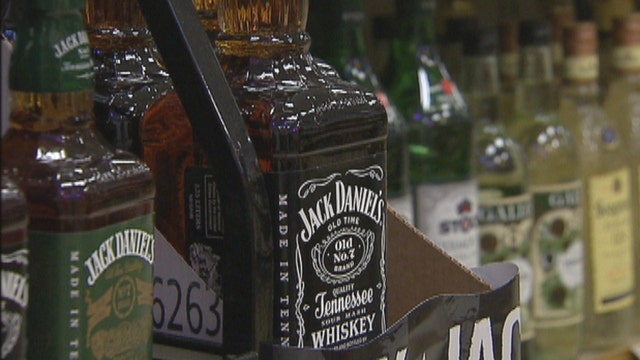Jack Daniel's Recipe for Making Money
Situated on a short, winding lane in Louisville, Ky., is a concrete-and-brick building from a bygone era producing something for investors that today is anything but bygone: bourbon.
The building, more than a half-century old and packed with tanks three-stories tall for fermenting grain and water into something much more potent, is home to Brown-Forman’s (NYSE:BF.B) distillery for Old Forester bourbon and Early Times whiskey. Brown-Forman’s most famous brand is Jack Daniel’s.
On the third floor, workers use wide-mouthed hoses to fill the vats with mash, as it’s properly known, which at this early stage looks more like a batter than a beverage.
“At this point, it’s sweet,” says Brown-Forman’s Woodford Reserve Distillery Manager Todd Roe, as the grainy mixture pours into a tank.
Once fermented, the concoction will be barreled, aged, bottled and finally sold.
Like the mash, for investors who foresaw the consumer trend back to whiskey – and more specifically, back to bourbon, which is whiskey aged in new barrels – gains have also been sweet. One-year returns on Brown-Forman stock are nearly 30%. In five years, investors have doubled their money.
A key reason for this appreciation, according to the company, has been product innovation.
In recent years at Brown-Forman, household names have not driven domestic growth. Instead, it’s been a vibrant new product pipeline, delivering such offerings as super-premium Woodford Reserve bourbons and new whiskies infused with extra flavors, such as honey.
“Consumers want a higher-quality product,” Roe tells FOX Business. “They demand complexity and flavor. And that’s what we’re providing here.”
Yet, as both industry insiders and equity analysts agree, it also means the innovation pipeline must always continue to gush.
What Can I Get For You?
Before bourbon and whiskey, vodka underwent a similar evolution. “Premiumization,” or the shift to higher-quality makes, took hold of the market. On a parallel front, distillers attracted another customer demographic by introducing infused flavors.
Martinis – once a beverage only seen in classic films – were suddenly being shaken in bars all across America and featured in popular cable television series.
As part of this trend, in 2012, according to the nation’s spirits association, 163 makes of alcohol were infused with orange, the most popular flavor, followed by cherry at 98.
The shift resulted in spirits stealing market share from beer and wine, according to analysts, a trend that has continued as bourbon soon charted a familiar path.
“(Growth) is really about innovation,” says Brown-Forman Vice President Phil Lynch. “The Woodford Reserve Double Oak, the Woodford Reserve Masters Collection, Jack Daniel’s Tennessee Honey or Early Times Fire Eater, these are all new brands that have come out just in the last couple of years.”
Like the fruity vodkas, Jack Daniel’s Tennessee Honey added a honey essence to a classic product.
“If you just stay still,” says Lynch, “you’re going to fall behind, because change is what the world is all about. And innovation is what consumer products are all about.”
But, he says, tinkering with well-known brands, such as Jack Daniel’s, is done only in rare cases and with great care.
“We’ve had about four new products from Jack Daniel’s since about 1860. Tennessee Honey happens to be the most recent one. We think that’s a reasonable amount,” he says.
